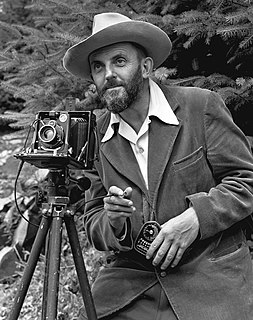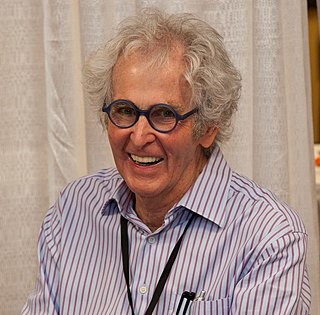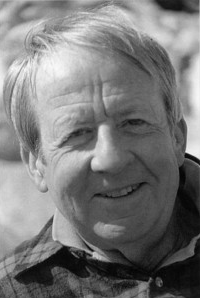Related Research Articles

Ansel Easton Adams was an American landscape photographer and environmentalist known for his black-and-white images of the American West. He helped found Group f/64, an association of photographers advocating "pure" photography which favored sharp focus and the use of the full tonal range of a photograph. He and Fred Archer developed an exacting system of image-making called the Zone System, a method of achieving a desired final print through a deeply technical understanding of how tonal range is recorded and developed during exposure, negative development, and printing. The resulting clarity and depth of such images characterized his photography.

Edward Henry Weston was a 20th-century American photographer. He has been called "one of the most innovative and influential American photographers..." and "one of the masters of 20th century photography." Over the course of his 40-year career Weston photographed an increasingly expansive set of subjects, including landscapes, still-lifes, nudes, portraits, genre scenes and even whimsical parodies. It is said that he developed a "quintessentially American, and especially Californian, approach to modern photography" because of his focus on the people and places of the American West. In 1937 Weston was the first photographer to receive a Guggenheim Fellowship, and over the next two years he produced nearly 1,400 negatives using his 8 × 10 view camera. Some of his most famous photographs were taken of the trees and rocks at Point Lobos, California, near where he lived for many years.

Jerry N. Uelsmann is an American photographer and was an early exponent of photomontage in the 20th century in America. His work in darkroom effects foreshadowed the use of Adobe Photoshop to make surrealistic images in the late 20th century, a process led by his now-ex-wife, Maggie Taylor, at that time. He received a Guggenheim Fellowship in 1967, a National Endowment for the Arts Fellowship in 1972, and the Lucie Award in Fine Art in 2015. He is a Fellow of the Royal Photographic Society of Great Britain, a founding member of The Society of Photographic Education.
Robert Adams is an American photographer who has focused on the changing landscape of the American West. His work first came to prominence in the mid-1970s through his book The New West (1974) and his participation in the exhibition New Topographics: Photographs of a Man-Altered Landscape in 1975. He has received two Guggenheim Fellowships, a MacArthur Fellowship, the Deutsche Börse Photography Prize and the Hasselblad Award.

Joel Meyerowitz is an American street, portrait and landscape photographer. He began photographing in color in 1962 and was an early advocate of the use of color during a time when there was significant resistance to the idea of color photography as serious art. In the early 1970s he taught photography at the Cooper Union in New York City.

Garry Winogrand was an American street photographer, known for his portrayal of U.S. life and its social issues, in the mid-20th century. Photography curator, historian, and critic John Szarkowski called Winogrand the central photographer of his generation.
Lee Friedlander is an American photographer and artist. In the 1960s and 1970s, Friedlander evolved an influential and often imitated visual language of urban "social landscape," with many of his photographs including fragments of store-front reflections, structures framed by fences, posters and street signs.
Frank Gohlke is an American landscape photographer. He has been awarded two Guggenheim fellowships, two fellowships from the National Endowment for the Arts, and a Fulbright Scholar Grant. His work is included in numerous permanent collections, including those of Museum of Modern Art, New York; the Metropolitan Museum of Art; and the Art Institute of Chicago.
Beaumont Newhall was an American curator, art historian, writer, photographer, and the second director of the George Eastman Museum. His book The History of Photography remains one of the most significant accounts in the field and has become a classic photographic history textbook. Newhall was the recipient of numerous awards and accolades for his accomplishments in the study of photo history.
Linda Connor is an American photographer living in San Francisco, California. She is known for her landscape photography.
Jim Goldberg is an American artist and photographer, whose work reflects long-term, in-depth collaborations with neglected, ignored, or otherwise outside-the-mainstream populations.

George A. Tice (1938-) is an American photographer, best known for his meticulously crafted black and white prints in silver gelatin and platinum, as well as his books, which depict a broad range of American life, landscape, and urban environment, mostly photographed in his native New Jersey, where he has lived all his life, except for his service in the U. S. Navy, a brief period in California, a fellowship in the United Kingdom, and summer workshops in Maine, where he taught at the Maine Photographic Workshops, now the Maine Media Workshops.
Marie Cosindas was an American photographer. She was best known for her evocative still lifes and color portraits. Her use of color photography in her work distinguished her from other photographers in the 1960s and 1970s. Most of her photographs were portraits and pictures of objects like dolls, flowers, and masks.

Ray K. Metzker was an American photographer known chiefly for his bold, experimental B&W cityscapes and for his large "composites", assemblages of printed film strips and single frames. His work is held in various major public collections and is the subject of eight monographs. He received awards from the John Simon Guggenheim Memorial Foundation, National Endowment for the Arts and Royal Photographic Society.
John Blakemore, is an English photographer who has worked in documentary, landscape, still life and hand made books. He taught the medium full time from 1970.

Benjamen Chinn was an American photographer known especially for his black and white images of Chinatown, San Francisco and of Paris, France in the late 1940s and early 1950s.
Walter Landon Chappell was an American photographer and poet, primarily known for his black and white photography of landscapes, nature, and the human body.
John Paul Caponigro is an Environmental Fine Art Landscape Photographer. He is the son of the American photographer Paul Caponigro and Eleanor Caponigro a graphic designer. John Paul attended Yale University, and the University of California, Santa Cruz where he was trained as a painter and later as a photographer. After college John moved to Maine and became an artist in residence at The Center for Creative Imaging. John now works with photo-based digital imaging as his primary medium. Dan Steinhardt of Epson considers John Paul "...one of the great mentors of the photographic medium". The American photographer Joyce Tenneson has said, "John Paul Caponigro is the rare combination of gifted artist and master technician. He works from the heart to create images that are poetic and evocative, and at times, mystical. He is someone whose sensitivity and intelligence work to break new ground, and someone I will enjoy watching in the years to come.". He has been awarded membership into many photographic organizations including the Photoshop Hall of Fame, the Epson Stylus Pros, Xrite Coloratti, and the Canon Explorers of Light. His work crosses the lines between photography and painting and displays knowledge of painterly composition and color theory, coupled with content of modern science, psychology, primal cultures, and the environment. The photographer Arnold Newman stated,"...Caponigro's mysterious and magical images go beyond reality or surrealism. He has created a wonderful new world of his own". John Paul Caponigro lives in Cushing, Maine with his photographer wife Arduina, and their son.
Barbara (Bobbie) Pugh Norfleet is an American documentary photographer, author, curator, professor and social scientist who used photography as social documentary and allegory to examine American culture. Her photographic work is represented in museum collections around the world. She is founder and curator of a photographic archive on American social history at the Fogg Art Museum at Harvard University.
William Clift is an American photographer known for his black-and-white imagery of landscapes and of architectural subjects. Most of his work has been made in New Mexico, including Santa Fe where he has lived and worked since 1971, and of Mont Saint Michel in France, and St. Louis, MO.
References
- ↑ "Paul Caponigro Artwork for Sale at Online Auction | Paul Caponigro Biography & Info". invaluable.com.
- ↑ "U.S. Department of State – Art in Embassies".
- ↑ "Paul Caponigro". New Mexico Museum of Art. Retrieved 14 August 2018.
- ↑ "Error - RPS". www.rps.org.
- ↑ "Photographer Paul Caponigro Biography". www.photographywest.com.